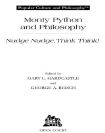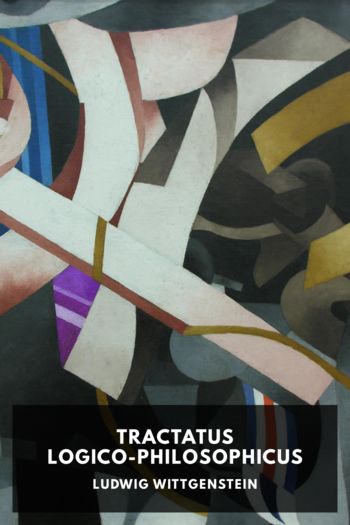Monty Python and Philosophy, Gary Hardcastle [portable ebook reader TXT] 📗

- Author: Gary Hardcastle
Book online «Monty Python and Philosophy, Gary Hardcastle [portable ebook reader TXT] 📗». Author Gary Hardcastle
So said St. Anselm. Well, not really. Actually this was the prayer of the school chaplain in Monty Python’s The Meaning of Life. However, St. Anselm did advance a similarly superlative premise asserting God’s greatness:
God is that being than whom no greater being can be conceived.
Put another way, God is simply, by definition, the greatest conceivable being. (St. Anselm may have meant “possible” rather than “conceivable” but we will leave that point off to one side for the time being and return to it later). Ah, but what conclusion can be drawn from this premise? Does God, this greatest conceivable being, actually exist, or is he merely imaginary?
St. Anselm was well aware of the freethinkers and skeptics who might doubt God’s existence, but he had an answer for them. Imagine the greatest conceivable being: omnipotent, omnipresent, omniscient, omnivident, omnibenevolent, and omnivorous. Suppose, St. Anselm asks, that such a being didn’t exist. Well, in that case, we wouldn’t really be conceiving of the greatest conceivable being, now would we? For we can conceive of a still greater being, namely, one that has all of these traits, and exists. Therefore, if God, by definition, is the greatest conceivable being, he must exist. In fact, St. Anselm takes the argument one step further and says that God is an even greater being than we can conceive of.63
Get Me to the Argument Clinic!
We don’t have to visit the Argument Clinic to see the problem with this argument (Yes, we do! No, we don’t!). Instead, we can do what philosophers do and focus on the form of the argument. Let us forget for a moment that St. Anselm’s argument is about God. Consider instead an argument of the same form, only in this argument we seek to establish the existence of Yeti. Yeti is defined as a Himalayan ape-like creature that leaves footprints in the snow. But suppose we tweak this definition as follows: Yeti is an actually existing Himalayan ape-like creature that leaves footprints in the snow. All that follows from this definition is that IF something is to count as Yeti, it would have to be Himalayan, ape-like, leave footprints in the snow, and exist. That’s a big IF. It doesn’t follow that Yeti does exist. In fact the camel-spotter of Monty Python’s Flying Circus (Episode 7, “You’re No Fun Anymore”) before he became a camel-spotter, had been a Yeti-spotter, and never did actually spot a Yeti. Thus, we may here be dealing with a definition that goes unfulfilled by any real being. Likewise, directly or indirectly importing the property of existence into the definition of God, as St. Anselm did, leaves open whether there exists a being that fulfills that definition. Defining God as the greatest possible (hence existent) being leaves unanswered the question of whether there is any real being that fulfills the definition. We can certainly conceive of the definition going unfulfilled without running into any logical difficulties. Hume summed this up well in his Dialogues Concerning Natural Religion, when he wrote: “Whatever we conceive as existent, we can also conceive as nonexistent” (p. 91). Thus, St. Anselm’s argument fails to establish the existence of God. Of course, its failure to do so does not disprove God’s existence either.
The Conceivable versus the Possible, Or, How to Confuse a Cat
Let us now return to the distinction between “conceivability” and “possibility” mentioned earlier. Although for St. Anselm’s argument I don’t think it matters very much whether God is defined as the greatest conceivable being or the greatest possible being, it is nonetheless an important distinction in philosophy. On the one hand, whether something is conceivable or inconceivable depends very much on the thinker. For example, what is conceivable to an intelligent man like the famous composer Arthur “Two Sheds” Jackson (Monty Python’s Flying Circus, Episode 1, “Whither Canada?”) is not necessarily conceivable to a Gumby brain specialist (see Monty Python’s Flying Circus, Episode 32, “The War Against Pornography”). Conceivability varies from one individual to the next. On the other hand, not everything that is conceivable is possible. There is a certain sense of the term “possibility,” namely physical possibility, which is independent of the capabilities of individual thinkers, and depends only on physical laws. For example, Luigi Vercotti (Monty Python’s Flying Circus, Episode 10, untitled) can conceive of Ron Obvious jumping the English Channel, digging a hole to Java, or running to Mercury. The fact that Luigi can conceive of these things certainly does not make them possible, as Ron’s failed attempts so laughably illustrate. While we’re on the topic, it should also be noted that conceivability and possibility often interact in interesting ways. For example, when something inconceivable to us turns out to be possible, we are often quite baffled to see it actually happen. This fact was put to productive use by the Confuse-A-Cat team in jarring a listless pet cat from out of its rut (Monty Python’s Flying Circus, Episode 5, “Man’s Crisis of Identity in the Latter Half of the Twentieth Century”). Actually, in that episode, the Pythons take things even further. Some of the stunts pulled by the Confuse-A-Cat team were not only inconceivable, but physically impossible (although television makes anything look possible). As baffling as it is to see the inconceivable happen, it is even more baffling to witness something that is physically impossible! This is the stuff of miracles, but more on miracles later.
The Argument from Design, or, “All Things Dull and Ugly”
Another argument for the existence of God, a bit more intuitive than the Ontological Argument, is the Argument from Design. The Argument from Design says that the natural world provides evidence of creation by a rational God. What kinds of evidence are cited?





Comments (0)